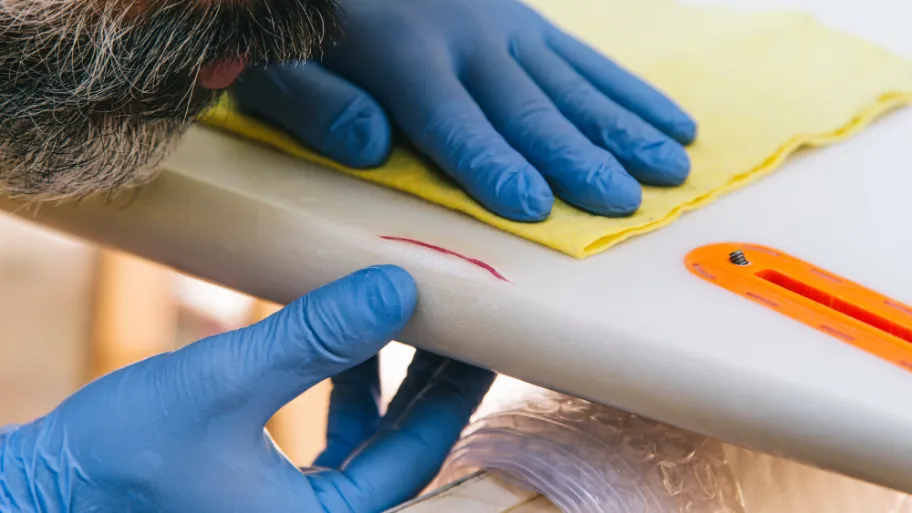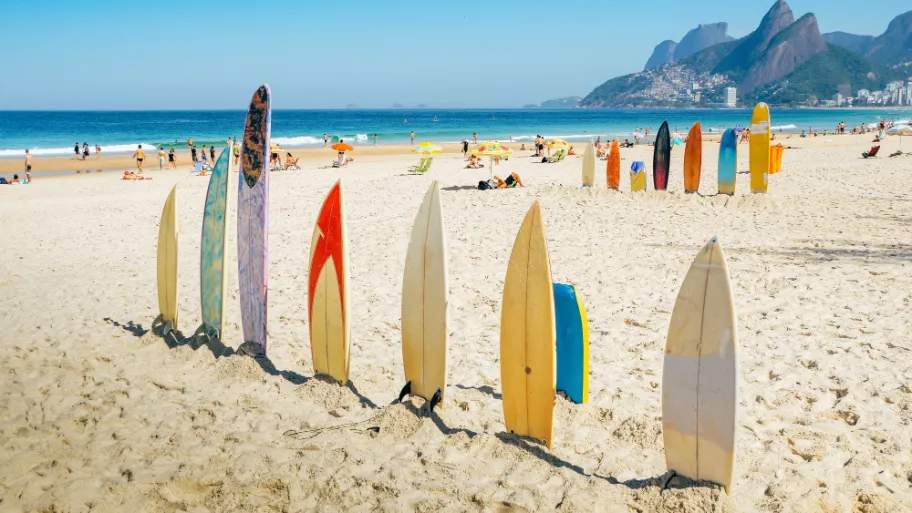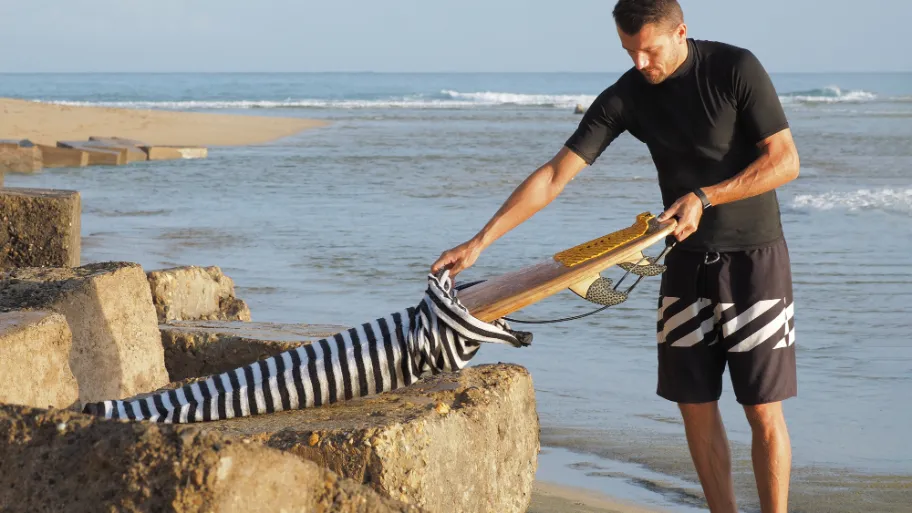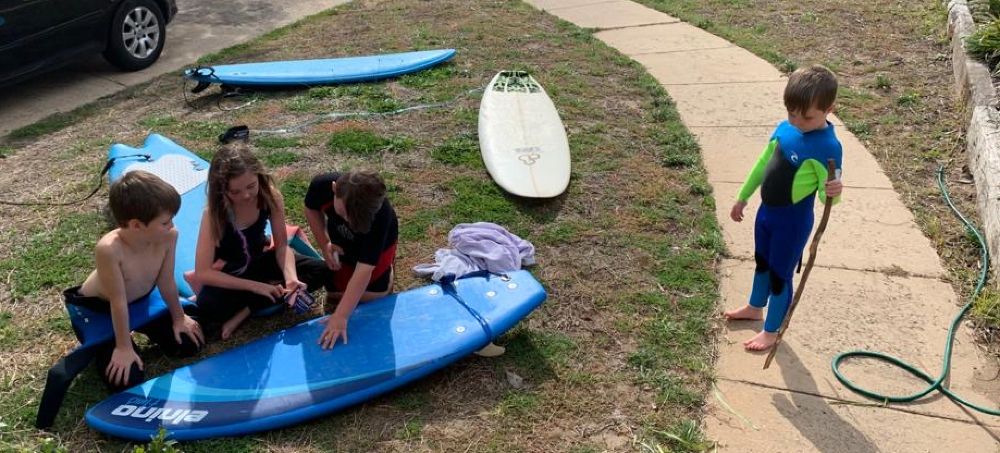Surfing is one of my favorite hobbies and I've been doing it for decades now.
There’s nothing quite like catching a wave on a well-built, good looking surfboard and we all know how bright white a new board is and how good it feels.
Unfortunately, though, even the best of surfboards start to get that ugly faded yellow color over time.
How do you stop your board turning yellow? Or at least slow the yellowing process so it looks brand new for as long as possible.
Exposure to ultraviolet (UV) rays and heat trigger reactions that cause the surfboard to to turn yellow. The yellowish color is a byproduct of this process, much like how iron turns reddish when it rusts.
This change of color shows most clearly in white surfboards, but is also seen (if less obviously) in different colored boards. There’s no way to completely prevent this process, but there are several methods you can use to slow the yellowing process.
Keep Your Surfboard Clean
Surfboards will inevitably pick up sand or dirt as you surf, and this can cause scratches in the board. Scratches further the yellowing process by exposing more surface area of the epoxy to UV rays and heat.
Cleaning your surfboard thoroughly on a regular basis will reduce the chances of this damage occurring.
Repair Dings And Scratches As Soon As Possible

Repair any dings or scratches in your surfboard as soon and as thoroughly as possible. This will help prevent the increased yellowing that these scuffs allow.
Allow enough time for compounds and other repair materials to set completely, even if it means taking a break from surfing for a while. The resulting resilience will be worth the wait.
Waxing Your Surfboard

Waxing your surfboard increases your traction while standing on your board and it also slows down the yellowing process. Surfboard wax adds a protective layer that absorbs more of the UV rays from the sun.
The UV rays will eventually penetrate the wax and wax doesn’t prevent yellowing from heat. However, it is still worth it to wax your surfboard because it does keep your board brighter longer.
Traction grips can also protect certain areas of your surfboard from yellowing from UV exposure. However, it'll only protect the area that's covered by the traction pad (which you don't see anyway).
Avoid Direct Sunlight

Exposing your surfboard to the sun is inevitable when surfing.
You can, however, be sure to not leave it in direct sunlight when not using it.
Put the board in a cool, shaded place if you’re just taking a short break from surfing. The more shaded, the better.
Covering Your Surfboard When Done Surfing

You don’t need to obsess over putting your board back in its cover the moment you take a break. It is a good idea, though, to put it in the cover for longer breaks or when you’re done for the day.
Keeping your surfboard in a surfboard cover protects it from more than just dings and scratches. The cover will also block the sun’s UV rays.
Insulated board covers are the best as they help to protect your board from both UV rays and heat, both of which cause your surfboard to go yellow.
Keeping Your Surfboard Away From Heat
Heat is a major factor in the yellowing of surfboards and one that most people don't consider.
Leaving your board to bake in your car in the sun for the entire day while you're at work is going to cause it to go yellow faster. That goes for storing it in the hot backyard shed too.
Some surfboard owners have had surfboards turn yellow even when being stored for weeks on end far from any UV rays.
Their boards turned yellow because the place they stored them was exposed to sustained high temperatures.
Make sure to store your surfboard in a place that won’t get too hot.
An insulated surfboard cover will help to slow how quickly your surfboard warms up – much like how a cooler causes ice to melt slower.
However, a cooler bag won't completely protect your board from heat so you should still avoid leaving it in a hot storage space. It's best to store it out of the sun and somewhere cool.
Under the house, in a cool garage or somewhere inside the house can be great places to store your board.
Buy A Surfboard Made With UV-Resistant Compounds
Many surfboard shapers these days are mixing special compounds into their boards that are more resistant to UV rays.
They aren’t impervious to yellowing, but they will turn yellow at a significantly slower rate.
Use A Soft Top Surfboard

Soft top surfboards are made with Ethylene-Vinyl Acetate (EVA) instead of the traditional resins and epoxies of most other surfboard types.
The EVA material (the same that’s in shoe insoles and exercise mats) has a different molecular structure which much more resilient against UV rays and heat.
Avoid Rocky Beaches
This last piece of advice may be a little trickier to follow, depending on what the beaches are like near you. Rocks and pebbles will, of course, make larger, deeper scuffs in your surfboard.
Choose a good sandy beach, or a sandier section of a beach to surf. Also, scout the beach out thoroughly if your are surfing there for the first time.
There is no way, ultimately, to completely stop your surfboard from turning yellow.
However, if you follow the above-mentioned steps, you will be able keep your board looking bright and brand-new for a much longer time.




